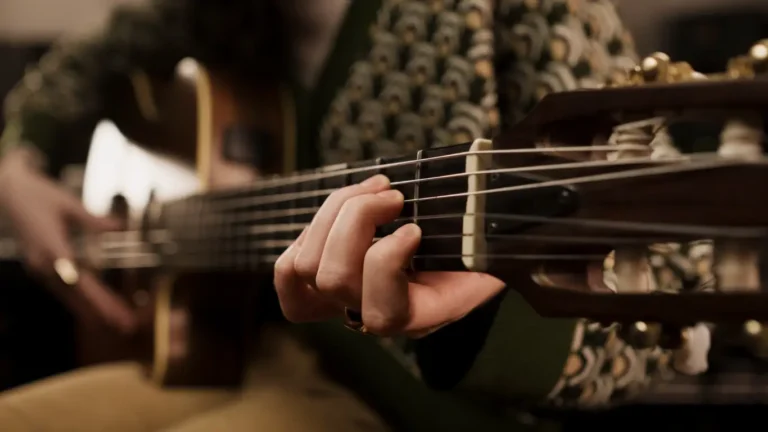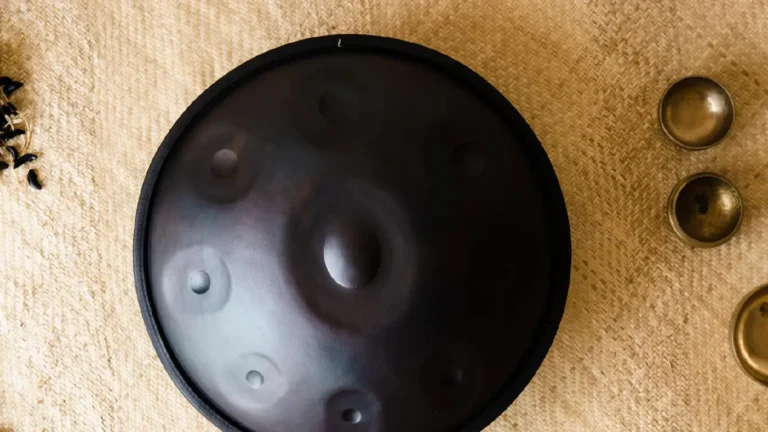Is the idea of picking up a new instrument appealing to you? The Daf instrument is a great instrument to try if you’re curious about the distinctive tones of Middle Eastern music. The Daf is a type of frame drum popular in Iran, Turkey, and other nations of the Middle East. In this article, we will investigate the meaning of “daf” and how to play it. We’ll also provide helpful advice from two well-known Daf instructors, Navasaz Academy, and Ali Massoudi.
Table of Contents
- What is Daf Instrument?
- History of Daf
- Daf Structures
- How to Play Daf
- Daf Classes at Navasaz Academy
- Join Ali Massoudi and Master the Daf!
- Conclusion
- FAQs
What is Daf Instrument?
The Daf is an Iranian percussion instrument typical in Middle Eastern music. This Persian string instrument has a massive circular frame, and metal rings are fastened to the inside. Traditionally, the drum has been played with a pair of hardwood sticks called “mezrab.” The instrument’s rich and resonant tone makes it suitable for classical, folk, and even modern music. The Daf is an integral aspect of Iranian and Middle Eastern culture and is frequently featured in traditional Sufi music.
History of Daf Instrument

The daf drum has existed since ancient times, giving it a deep and varied history. Evidence of the Daf’s existence dates back to ancient Persia when it was played during religious and ceremonial events. This is where the first examples of the instrument were found. The Persian kings and nobles often had the drum played in their courts on special occasions.
The Daf’s popularity grew over time and is now widely played in Central Asia and the Middle East. Various musical cultures took it up and adapted it to their own sound and regional preferences. Drums were played in many different ways across different cultures, with bare hands and fingers in some places and hardwood sticks and metal rings in others.
The Daf instrument is still commonly utilized in Persian and Middle Eastern music and has acquired appeal in the West. Traditional instruments like the oud, ney, and qanun are often featured alongside them in ensembles. The Daf is also used in modern music, with performers developing new and exciting ways to use the instrument. The Daf has been around for a long time, but it is still a part of Middle Eastern music and culture today.
ِDaf Structures
The Daf’s distinctive sound is created by combining the many components that make up the instrument. A daf consists of the following parts:
- The Daf’s body, known as the “frame,” is a spherical piece of wood or metal. Between 30 and 50 centimeters in diameter is possible.
- The skin is the membrane that covers the framework; it is typically made of goat, lamb, or fish skin. When you hit an object with your hand or a beater, the skin produces sound.
- Some dafs feature tuning rings around the instrument’s frame, allowing the player to fine-tune the instrument’s pitch.
- The void between the skin and the frame is the resonator, which amplifies the instrument’s sound.
- Attached to the frame of some dafs are metal rings, which jingle when the instrument is struck.
- The skin of the Daf is hit with a stick or mallet called a beater. It has a rounded or flat head and can be made of wood, metal, or plastic.
Anyone interested in learning to play the Daf instrument should start by familiarising themselves with the instrument’s many components.
How to Play Daf Instrument
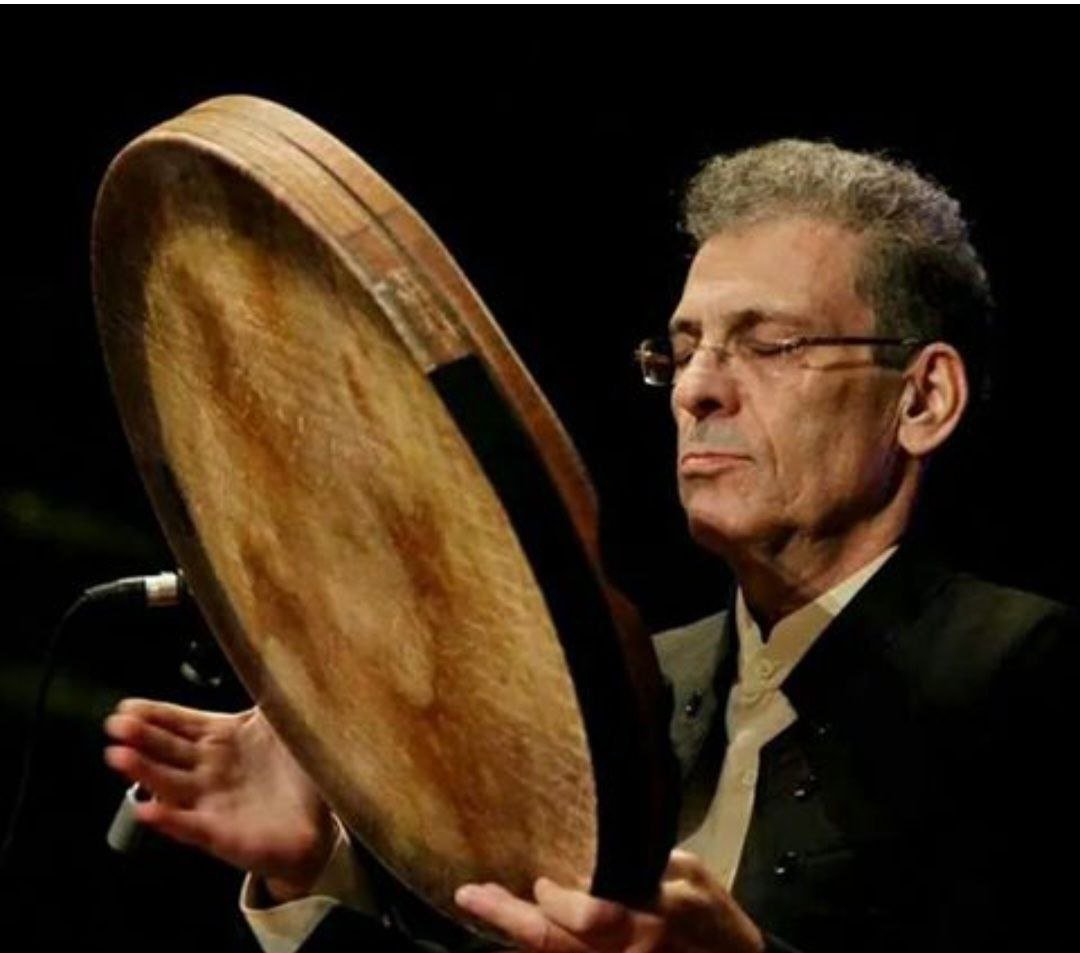
The Daf is an exciting and gratifying instrument to play. It’s difficult for newcomers, but anyone can master it with enough time and effort. Instructions for playing the Daf are provided below.
- How to Hold a Daf instrument: Keep your thumbs inside the Daf’s frame while your fingers rest on the outside. Don’t let it slide out of your hands, but don’t squeeze it.
- To make a noise, use your right hand to strike the Daf. All five fingers of the hitting hand should be pointed down, and the writing should be held at the center of the frame. Don’t use your palm or heel to hit the Daf; instead, use your fingertips.
- The “doumbek” beat is the foundation of your Daf instrument playing. The Daf is struck with the right hand, then the left, and finally, both hands together to create a simple rhythm. Start playing this rhythm slowly and work your way up to a faster tempo.
- Master various playing styles to explore the instrument’s full tonal possibilities. For instance, the “snap” technique is striking the Daf with the fingertips and quickly withdrawing the hand to produce a snapping sound. A continuous tone can be made by rolling the fingers over the Daf, as in the “roll” technique.
- Once you have mastered the basic rhythm, try experimenting with other rhythms to make more intricate patterns. Daf instrument music features various rhythms, each with a distinctive feel.
- Like any other instrument, regular practice is the secret to becoming an accomplished Daf player. Dedicate some time each day to practicing so you can hone your skills and refine your technique.
- If you can find a qualified daf teacher, I recommend taking lessons from them. A private instructor might speed up your progress because of the individualized attention you’ll receive.
- Keep in mind that mastering the Daf instrument will take time and effort. If you don’t get it right away, that’s okay; keep trying. If you keep at it, you will eventually get better.
Daf Classes at Navasaz Academy
All skill levels are welcome to join Navasaz Academy’s Daf classes, which teach the ins and outs of playing the Daf. Instructors have extensive expertise in training pupils of varying Daf-playing abilities and have demonstrated instrument mastery.
Navasaz Academy’s Daf lessons are designed to teach pupils everything they need to know about the instrument. Classes focus on fundamentals like hand position, rhythm, and sound production per the Daf instrument. Complex rhythms, improvisation, and composition are also taught in the curriculum.
Navasaz Academy provides Daf instrument classes in both group and individual settings. Private lessons offer a more individualized approach for students who wish to focus on specific parts of Daf playing. At the same time, group classes are great for students to learn from one another and get feedback from their peers.
Since Navasaz Academy’s Daf Classes are available online, they are open to students worldwide. Thanks to the online format, students can study whenever it is convenient for them. Navasaz Academy also offers supplementary materials to its pupils, such as video lessons and musical sheet music, to supplement their education.
To sum up, Navasaz Academy’s Daf Classes provide students an excellent opportunity to develop and perfect their Daf playing skills. The course content is differentiated for different ability levels, and knowledgeable teachers work with each student individually to help them succeed.
Join Ali Massoudi and Master the Daf instrument!
Ali Massoudi is a respected Daf player and educator who has been active in the field for quite some time. He has established a method of instruction that is distinctive in its focus on the Daf’s cultural and historical context and the instrument’s technical aspects. Ali Massoudi takes a very individualized approach to teach Daf instrument, allowing students to advance at their own pace and towards their own goals.
Ali Massoudi’s Daf classes at Navasaz are unlike any others since they emphasize playing traditional Persian instruments. Learning the Daf’s traditional rhythms and techniques, according to Ali Massoudi, is essential to appreciating the instrument’s role in Persian music and culture. He provides a fun and approachable way to learn complex rhythms like 6/8, 9/8, and 12/8.
Ali Massoudi blends contemporary methods of Daf playing into his lessons alongside traditional Persian rhythms and techniques. He equips his students with the skills to experiment with the instrument in new and exciting ways by teaching them to improvise and play with other instruments. In addition, he stresses the importance of good rhythm and time in learning to play the Daf.
Taking Ali Massoudi’s Daf classes is, in general, a wonderful and fruitful experience. Whether you’re just starting or are a veteran musician, his individualized instruction will help you learn this lovely instrument swiftly and thoroughly.
Conclusion

In conclusion, the Daf is a vital percussion instrument used for millennia in Middle Eastern music. Because of its distinctive tone and rhythmic patterns, it has found widespread use in both classical and contemporary music. Time, effort, and an appreciation for the Daf’s cultural significance are all necessary for learning how to play the instrument well.
Attending sessions at a reputed institution like Navasaz Academy and studying under skilled instructors like Ali Massoudi are just two viable options for learning and mastering the Daf instrument. Playing the Daf can improve your health on all levels (physical, mental, and emotional) and provide a bridge to your cultural past.
Let us work to maintain the Daf’s cultural relevance and encourage its use in various musical settings as we continue to learn about and marvel at its beauty.
FAQs
How did the Daf instrument get its start?
Traditional Persian, Turkish, and Kurdish music all use the Daf instrument, which originates in the Middle East and Central Asia and has been played for generations.
What sets a daf apart from a tambourine?
Tambourine and Daf are percussion instruments, but while they may seem similar, their sounds and playing styles couldn’t be more different. The Daf is more substantial and produces a lower tone than a tambourine.
Does Anyone may learn the Daf instrument?
The Daf is an instrument that anyone may learn, regardless of age or musical experience. To master something, all you need is time and effort.
Can I take Daf lessons without buying a Daf?
Having your own Daf is helpful if you plan on practicing consistently, but it’s optional if you’re just getting started. A daf can be borrowed from a music studio or rented from a tutor.
Do you need to take lessons to play the Daf, or can you teach yourself?
For those just starting, the structure and instruction of a Daf course can be invaluable. Self-study and practice can quickly get you up to speed on the Daf instrument, though.
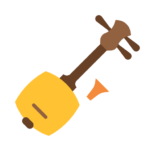 String Instr
String Instr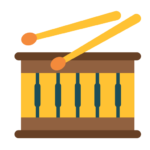 Percussion Instr
Percussion Instr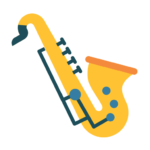 Wind Instr
Wind Instr Keyboard Instr
Keyboard Instr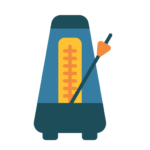 Tools
Tools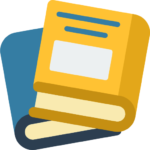 Books
Books
